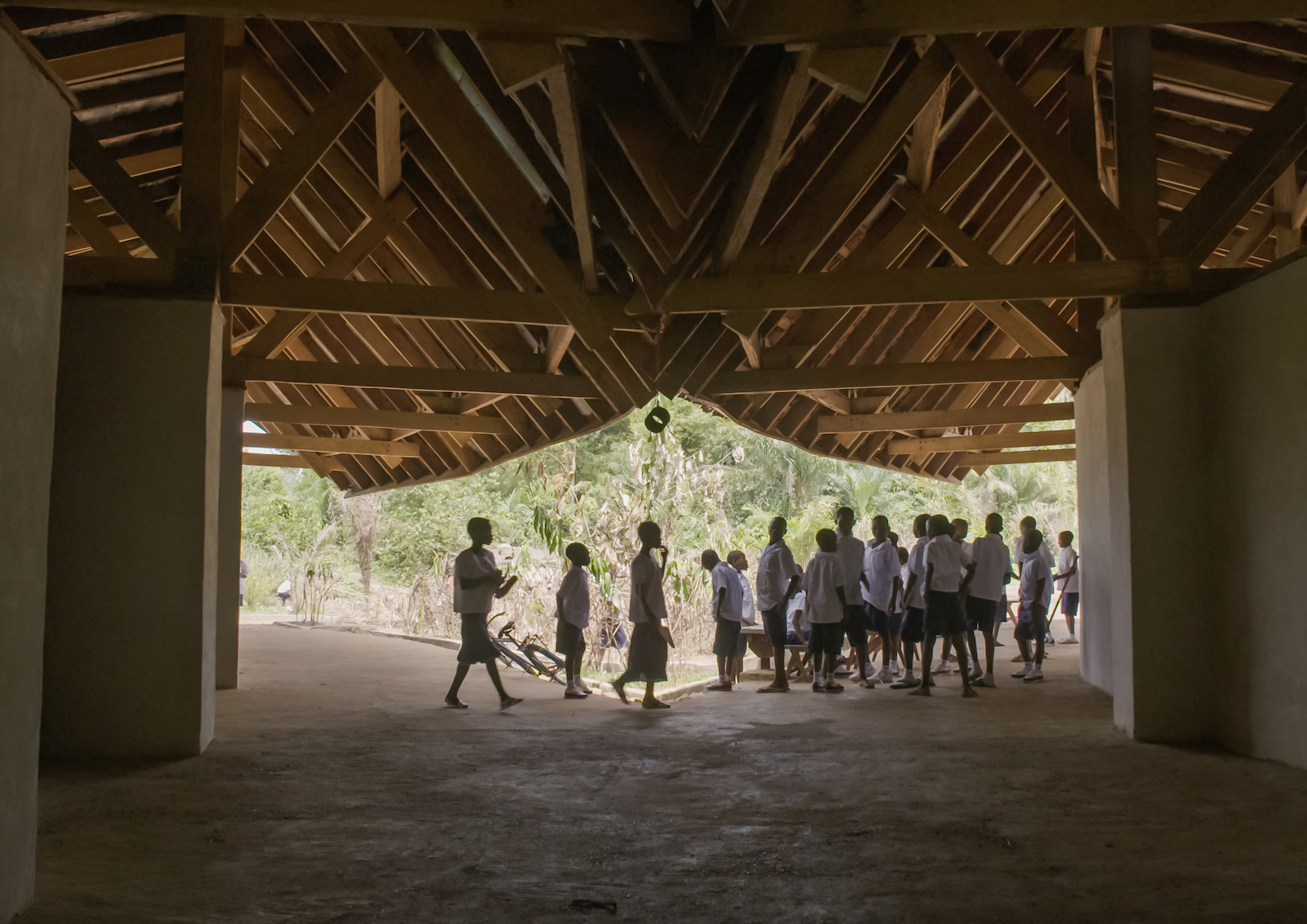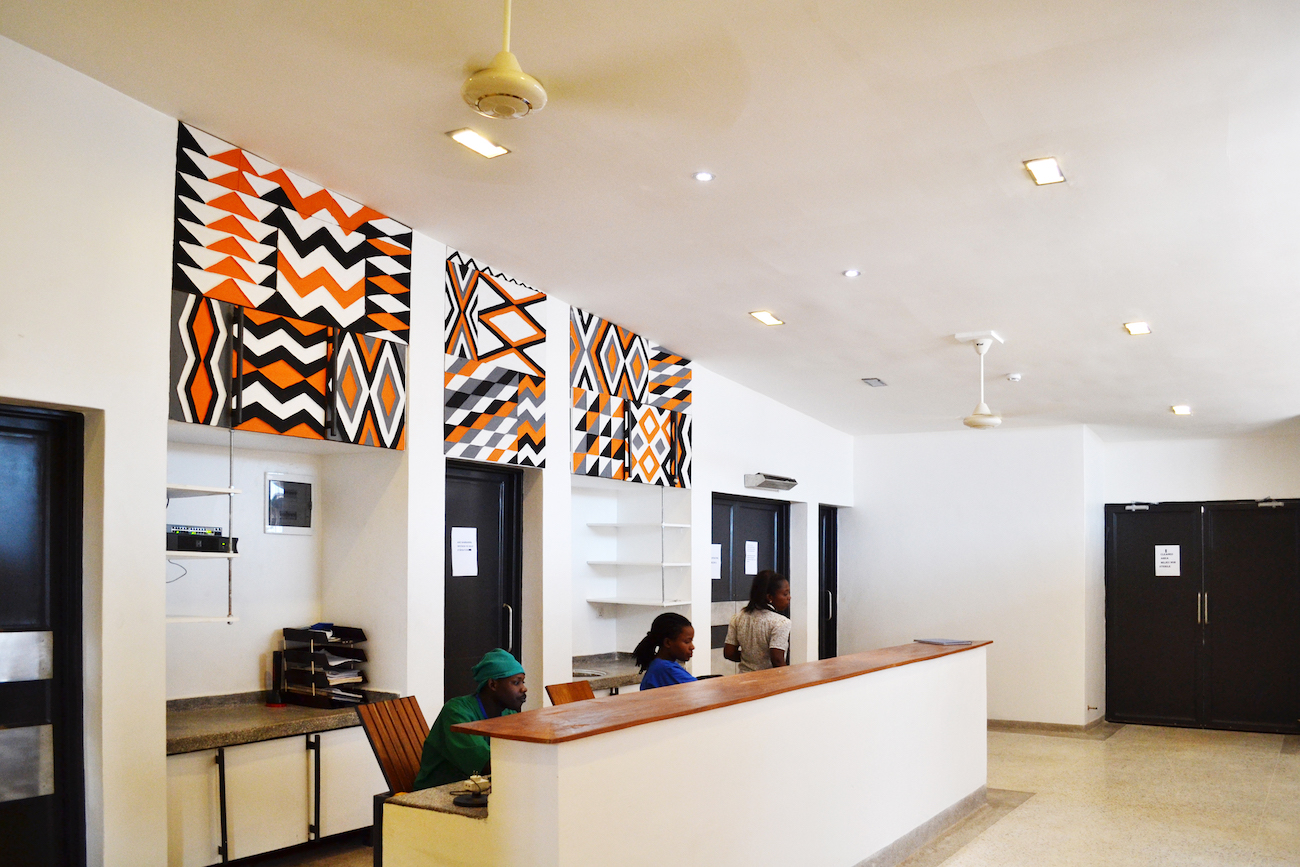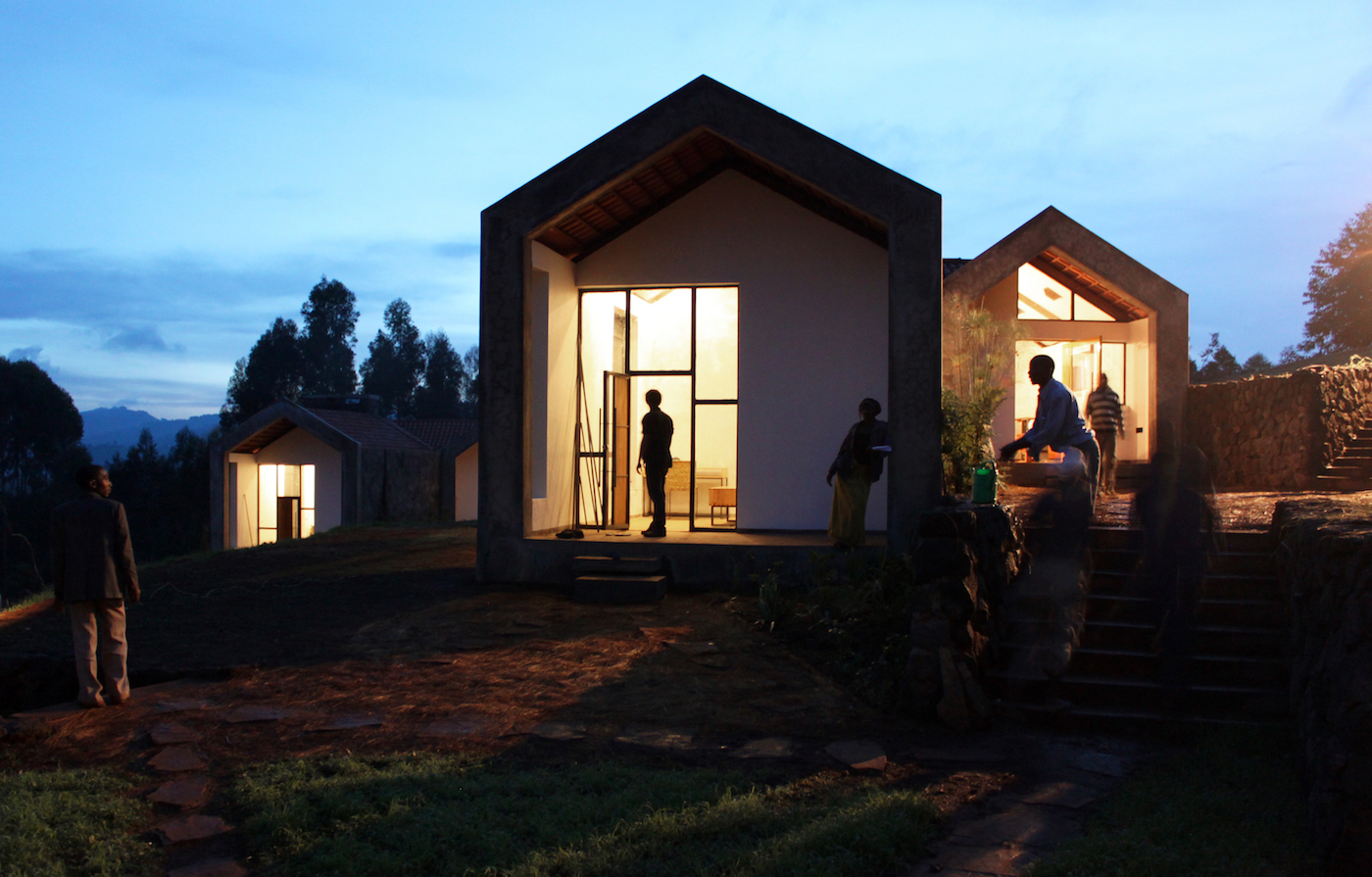There aren’t that many African architects out there – Christian is one of the few. He completed his bachelor degree in 2008 at the Tongji University in Shanghai before returning home to Rwanda to forge his career.
In 2010, he joined the promising design studio, MASS Design Group – and has become the firm’s programme manager in Rwanda. MASS Design Group have designed buildings across Africa including in Zambia, Rwanda and Congo as well as in the US and Haiti.
There’s a focus on projects that are connected to wellbeing within communities, such as the Butaro District Hospital and the Ilima Primary School. MASS Design Group seek to expand on their practice with a two-year fellowship programme for architects that will begin in September.
Applications to study at the African Design Centre are still open until June 29.
I spoke to Benimana about where Africa’s cities are heading – and what ‘African’ architecture actually is.
Where do you see Africa’s rapidly developing cities heading in the next ten years?
It’s an interesting question. It all depends on what we do to address where the development of Africa’s cities are heading, it all depends on what we do about it now. If we don’t do anything there’s going to be a disaster. Cities are going to be stretched to their limits until we end up with human-produced disasters and epidemics.
We need to build the infrastructure that ensures a certain level of quality of life.
If we look at the development of Africa’s cities as an opportunity for economic growth into the largest consumer markets, we can use them as drivers to surpass growth in China and India. We need to build the infrastructure that ensures a certain level of quality of life, health and environmental sustainability and of human dignity.
How can architects practically help on a large scale? Considering how much construction takes place without any architect’s input.
You’re right, but it’s architects who are in the best place to define what our buildings should look like. Architects can set precedents for what buildings can achieve, raise expectations for the built environment across a country, influence policy and implement minimum standards for the companies, government ministries and organisations that are building on a larger scale.
Architects need to stop buying cheap materials from China.
We also have the power to make these developments a source of income for the majority of urban dwellers who happen to be young people, and in most cities are likely not educated for white-collar jobs.
If we use this massive investment that’s going towards these cities we can build resilient infrastructures while creating local jobs. By pushing innovation in local materials with skills and craftsmanship based on African heritage, we can actually end up with a concoction of development that can benefit the population. Architects need to stop buying cheap materials from China, put our brains together and see what we can do with what we have around.
What challenges do you face as an architect on the continent?
The perception of the architect’s role and responsibilities in Africa. I was going to also say funding but that’s a question of perception.
The client stays in this powerful position because they have the funds.
If people are not willing to compensate someone for the services that they need to live, survive and prosper in their profession then being an architect becomes this game of undercutting each other to make ends meet.
Perception is the biggest challenge. The situation above then hinders someone’s greater ability to sit down, focus and be creative. It ends up being this cat-and-mouse game where the client stays in this powerful position because they have the funds: the architect then becomes a servant to those funds. Which is not fun.
So, you think there is a problem with the status architects are given in the construction process?
Yes, exactly. We basically need to go back to when the solutions were identified by the architects, engineers and designers, and the project budget was determined by them.
You go for the solution that will actually make you feel better.
We always compare it to healthcare. If you go to the doctor when you’re ill and you need a cure, you don’t tell them that ‘I only have this amount of money for drugs’ and that’s what they should work with. You go for the solution that will actually make you feel better. Governments and societies then put in measures that allow patients to afford the care that they need to be healthy.
In some governments – not all though – there’s that type of approach: giving power and leverage to architects to actually make a difference.
So what then are the benefits to being an architect on the continent?
There are huge opportunities and mass work to be done over the next 20, 30 and 50 years. If African countries keep the growth they’re registering today and in the past couple of years, it’ll continue to be an exciting place to work as an architect.
In addition to that, the continent presents a variety of cultural heritage and cultures that can foster creativity very easily.
Which governments are getting it right in terms of policymaking to help architects design cities in a positive way? Have you encountered any?
I think a lot of governments are realising that something needs to be done. Of course there are a lot of countries struggling with their past, notably South Africa, Nigeria and Egypt – that has a lot of political instability at the moment. At the same time, two months ago Egypt announced the building of a new capital city costing around USD$10 billion.
A lot of African countries are seeing cities as the only way to deal with the growth of their populations. It’s difficult to get to better solutions. Look at South Africa where apartheid has played a big role in segregating the population and you can see that apparent in their cities today.
You find that their secondary cities are more or less neglected.
Kigali has a plan for the next 50 years and there are a number of countries that are going to see a lot of new cities created because the current cities are stretched to their limits.
Kenya and Ghana have done a fairly good job in investing in their capital cities but you find that their secondary cities are more or less neglected in terms of development and centralisation.
I know in Rwanda there’s a big push to change this. To create not only efforts in the capital city but also investments in the country’s secondary cities so that Kigali can become less congested.
I feel like many countries in East Africa are seeing this solution as an option. Not many have concrete plans towards implementing it yet. I assume if it works in Rwanda because we’re a small country and it’s very easy for us to experiment, it might be adopted by other countries as well.
What is ‘uniquely African’ architecture?
The unique thing about African design is not that it is in Africa or by African people per se, it’s the skills, craft, knowledge and culture that we can use as the source to create the architecture. Architecture as a skill is internationally practiced. You don’t have to be an African architect to produce African architecture. You also don’t have to produce something out of grass completely, to say you’ve created something of African architecture.
What lessons, inspirations, what are our traditions that we do or we did before? Why were we doing that in the first instance? You and I were talking about herding communities. How should that affect the type of architecture we develop in a specific region in response to that context?
What are the traditions around cattle-rearing that we should uphold within that community, and in its built environment ? It’s different from building skyscraper apartments in the far-east, where people take their shoes off indoors. It’s different than building blocks where residents don’t know their neighbours.
It’s rooted and informed by African cultures.
To me that’s what African architecture is. It’s rooted and informed by African cultures; it’s informed by African traditions. And then ultimately it serves specifically African communities because architecture is not universal. It’s not a copycat solution. It’s not a shoe that fits all. It needs to be customised to the people first.
Can architecture help with climate change considering how adversely affect the continent is?
Definitely architecture can contribute if it is constructed correctly. I think the issue of climate change is above architecture. I think architecture relates to climate change as a consumer-goods discipline and also as a discipline that has power to prescribe the construction of certain goods.
I believe as architects if we take to heart the imported energies used on our sites, we can understand the implications that has and the scale of how it can help the environment. When we import materials, techniques and machinery, the embodied energy or embodied carbon emissions of our projects goes up: that should shape our decisions about materials and about construction.
Though our powers as architects are limited to prescribing those things. Obviously the climate issue is everyone’s responsibility to decide whether they will adopt those prescriptions or those recommendations as a society.
I actually don’t think that architecture’s role should be any different to combatting climate change.
Otherwise I actually don’t think that architecture’s role should be any different to combatting climate change because if architecture is done correctly it should be inherently and automatically address climate issues.
I agree.
Architecture should not change to address climate issues…
Yes, it should be integrated in what you do already.
Exactly, that shouldn’t be separated from architecture in the first place.
MASS Design Group are currently taking applications for the African Design Centre’s two-year fellowship for recently graduated architects worldwide. You can apply here.





